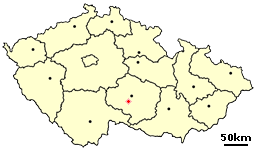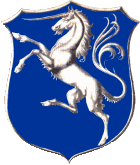Air Commando One: Heinie Aderholt and America's Secret Air Wars by Warren A. Trest. Smithsonian Institution Press (http://www.si.edu/sipress), 470 L'Enfant Plaza, Room 7100, Washington, D.C. 20560, 2000, 271 pages.
Warren A. Trest has written a good book about a great airman. Harry C. Aderholt is one of the legends of Air Force special operations, and Trest tells us why. Air Commando One follows Aderholt's career from the early days when Air Force special operations dropped Korean agents behind communist lines in 1950 to the evacuation of our Hmong allies from Laos as the communists triumphed through-out the region in 1975. Aderholt participated in a breathtaking number of "secret air wars" and was usually in command. His achievements under extraordinarily difficult conditions and byzantine command and security arrangements are truly awe inspiring. The psychologist will be disappointed that the book does not provide greater insight into Aderholt's family life; the historian will be disappointed that the book provides only Aderholt's part of the operations described rather than a more complete picture of the operations as a whole; and the skeptic will be concerned that not enough bad things are said about Aderholt. But t hose people within the special operations community will appreciate the very personal perspective the book provides on covert and clandestine operations and the early days of the Air Force Special Air Warfare Center. Aderholt had the career we all hoped we would have, and his subordinates say the sorts of things about him that we wish our subordinates would say about us. This is just the sort of inspirational book young Air Force Special Operations Command (AFSOC) officers and noncommissioned officers (NCO) should read and reread.
This book, however, is more than just a collection of hair--raising flying stories and examples of good leadership. Trest also tries to address the traditional conflict between the "Big Blue Air Force" and the Air Force special operations community. Trest does this mainly through Aderholt's conflict with Gen William W. Momyer in Vietnam. In Trest's view, their conflict centered on the issue of centralized control of airpower. Unfortunately, Trest pursues the argument only as far as Aderholt and Momyer did and does not get as deeply into this issue as he might. For example, Trest supports Aderholt's view that sometimes centralized control decreases the effectiveness of airpower (absolutely true), but he neglects the fact that bureaucratically centralized control enhances the power and prestige of the Air Force and helps make more airmen generals. Even if centralized command were marginally worse from a combat-effectiveness standpoint (and in Vietnam it often was) and even if it did not mesh so nicely with Gene ral Momyer's comments, its decisive bureaucratic advantages would have made it almost irresistible. Aderholt never had a chance on this one.
When Momyer took command of Tactical Air Command (TAC), all of Air Force special ops came under his purview, and things did not go well for special operators generally and Aderholt in particular. Unfortunately, Trest (and probably Aderholt) once again does not think deeply enough about why the Air Force hierarchy was so hostile to special operations. A little consideration would point out that, as a rule, special operations are low-cost, high-risk, and high-reward operations. However, institutions like the military services are extremely risk-averse and measure their value by their budgets. In this calculus, low cost is bad, and high risk is horrendous. Worse yet, the high rewards of successful special operations often do not go to the services. If the Khamba tribesmen to whom Aderholt airlifted supplies had won some sort of autonomy for Tibet, it would have been great for Tibet and perhaps the CIA, but what would it have done for the Air Force? Aderholt didn't ask, but TAG commanders did, and they often felt that finding high-tech, high-cost solutions to obvious challenges (like shooting down enemy planes) made a lot more sense than finding better ways to secretly support the CIA, the Khamba, or some other shadowy weirdos. Even the least thoughtful members of Aderholt's units should have realized that if their operations required carrying false ID cards that did not link them to the US Air Force and required them to paint over all the Air Force markings on their aircraft, then the Air Force was probably not gaining much from the operation. If Heinie realized this, Trest does not tell us.
Although institutional support for special operations forces has increased dramatically over the past decade, institutional outlooks have not always kept up, and the sorts of constraints and risk aversion Aderholt complains about will be very familiar to the current generation of AFSOC leaders. It is important to note, however, that while Aderholt (and special operations) developed some powerful enemies within the Air Force, he (and special operations) also had many powerful friends. Aderholt did eventually make brigadier general, and many good men don't. This was a testament to his enormous talent but also showed more open-mindedness in the Air Force leadership than some give it credit for. The junior officers and NCOs who read this book should remember that doing the right thing may make them some enemies, but it will also make them some friends--and in important ways, Aderholt's enemies helped him. Although he may not have appreciated it at the time, the slowness of his promotions made him unusually mature and experienced for his grade and helped ensure his success at every level. His real talent was for personal leadership, and lower rank gave him the chance to demonstrate this in a number of smaller units. He might not have done well commanding a numbered air force and certainly was not suited to life on the Air Staff. His relatively low rank also opened assignment possibilities for him that would not have been available if he had been promoted faster. Junior officers need to be reminded that low rank also has its privileges and opportunities, if they follow Aderholt's example and take full advantage of them.
COPYRIGHT 2000 U.S. Air Force
COPYRIGHT 2004 Gale Group



